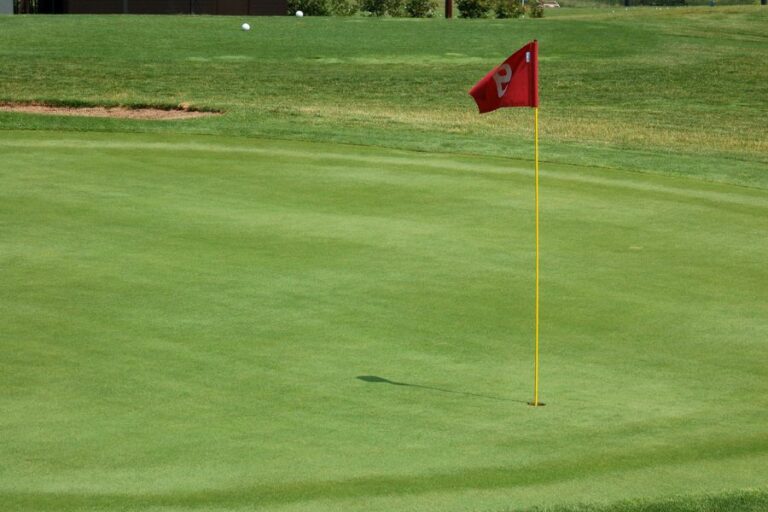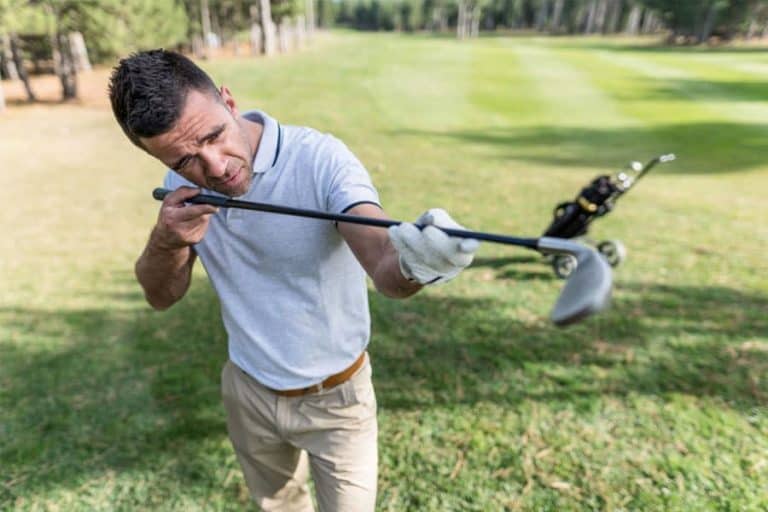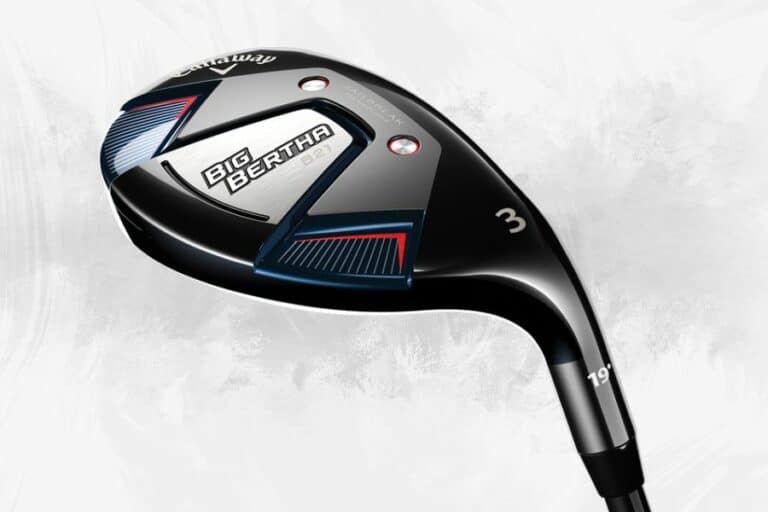How To Fix A Slice In Golf?

Slicing can be one of the most frustrating issues a golfer faces. Here is a detailed guide that lists causes and explains tips to help you fix a slice.
A slice is a common flaw in a golfer’s swing that can result in the ball veering off to the right (for a right-handed golfer). It can be frustrating on the course.
However, there are steps you can take to fix your slice and improve your game. We have put together tips and techniques for correcting a slice in golf.
Step-by-step guide – how to fix a slice
This step-by-step guide on how to fix a slice in golf will help golfers of all levels improve their accuracy and hit the ball straight with greater consistency.
1. Check your grip and fix it
The first step is to check your grip. The golf grip should be set up to give you maximum control over the clubface.
Hold the club in your fingers rather than your palm to ensure a lighter grip. This will make it easier to be tension free and avoid slicing the ball. In addition, keep your trail hand more under than on top of the shaft so that the face doesn’t open on the backswing.
Some golfers(in rare cases) tend to have a good left-hand grip but a weak right-hand grip, which can make it difficult to square up the club face. Thus, it is important to check your grip before you begin.
2. Check your alignment
The second step is to check your alignment. Ensure that the feet, hips, and shoulders are aligned in the target line’s direction. An incorrect alignment will cause the clubface to be open at the point of impact and can result in a slice.
3. Check your swing path
The third step is to check your swing path. A steep in-to-out swing plane will lead to an open clubface at impact and result in a slice. Learn to swing on a more shallow and inside-out path for better accuracy and consistency.
4. Position your golf ball properly
The fourth step is to ensure the ball position is right. The ball should be placed in the center of your stance and aligned with the target to ensure a straighter shot. If the ball is too far back when hit by a driver, it can cause a slice.
5. Set your posture correctly
The fifth step is to set your posture correctly. The correct posture will help you keep a consistent swing tempo and add power to your shot. Remember to bend your knees slightly and bring the club back low on your takeaway.
Here are some posture tips that help you hit a straight shot:
- With the golf club in both hands, press it against the top of your hips and stand up straight.
- Bend forward from the hips.
- Grip the club as you normally would when preparing for a shot
- Bend your knees till you feel a slight tension in your hamstrings.
- Keep your club head close to the ground.
- The proper way to stand is with your weight balanced between your heel and the middle of your feet.
6. Work on your aim
The sixth step is to work on your aim. A right-handed golfer may believe that swinging/aiming to the left will fix the slice. However, that is not the case. Having a good aim requires you to concentrate and focus on the target. Aiming in the opposite direction will not fix the slice.
6. Develop a proper release
A correct release will help you square up the clubface more consistently and avoid slicing the ball. Focus on the release of your club, ensuring that you don’t get too steep and that your wrists have hinged at the right moment.
To create a great release, rotate your forearms through impact. This method is much more powerful and provides more control than flicking at the golf ball with your wrists.
7. Fix your backswing
If you allow your arms to swing down from the top of your backswing, following your shoulder line, it will produce a great path on the downswing. The sensation should feel much like an underhanded throwing motion.
8. Consider your divots
Divot refers to the turf displaced by the golf club when you strike a golf ball. After hitting an iron shot from the fairway, you can check your progress by examining your divot. It will point to the left of your target, which shows that your club is following a right-to-left path.
9. Transfer your weight during your golf swing
The ninth step is to ensure you are transferring your weight correctly. Transferring your weight on the downswing will provide more power and create a better swing path.
You can practice this easily by placing something next to your front foot and touching your left thigh during setup.
This can be a golf bag or any object standing up straight to your thigh. As you swing back, your thigh will move away from this object slightly.
This movement indicates that the weight is being transferred to your back foot. As you shift your weight during your downswing, your thigh will once again touch the object. This will help you maintain a consistent and powerful swing path.
Ways to practice fixing your slice
Here are some drills for some practice swings to help you fix your slice:
- Grab your iron and make a few swings intending to square up the clubface at impact. Do this by making a backswing and follow through with an inside-out swing path using a full shoulder turn to the top. Practice using swings at various distances and pay attention to how far the ball is slicing. Make adjustments.
- Hit the ball and make sure the ball curves right-to-left through the air and not left-to-right. Take a video of yourself and analyze your swing to identify areas you can improve upon.
- Don’t get discouraged if you miss-hit a few shots. Remember that fixing a slice is all about consistency. Keep practicing, and you will be able to hit your irons with greater accuracy and precision.
Ways to fix your swing path
Remember the below-given tips to create a square or in-to-out swing path:
- Maintain the space between your elbows constantly throughout your stroke. They are likely to move apart and lose their connection with one another if you don’t.
- Avoid lunging forward towards the ball with your arms and upper body. Instead, initiate the movement from the ground up.
- Keep your right elbow in front of your body as you take your swing to ensure an inside track into the ball. This will also help keep it connected and in sync with the turn of your body.
What is better to slice with – Driver or Irons?
Most golfers will find that, in general, it is easier to slice with an iron than with a driver.
Irons are smaller and lighter. Thus, they are more maneuverable and easier to control. If you are having trouble with a slice, it is best to practice using an iron first.
On the other hand, drivers are larger and heavier, making them harder to control and more likely to cause a slice. This is because drivers create less backspin and have the potential to generate more sidespin depending on how open or closed the clubface is at impact.
Once you can consistently hit the ball straight with an iron, you can then move on to using a driver. With some practice, you should be able to control your slice with both clubs.
Why should you fix your slice?
Fixing your slice is important because slicing the ball will cause you to lose distance, accuracy, and control. This can lead to a poor score on the golf course, as well as frustration and unhappiness with your game.
Moreover, it can also be expensive as sliced golf balls usually end up in places where it might be difficult to look for them.
Fixing your swing habits will allow you to hit the ball straighter and longer and help you develop better control of your golf shots. It can also lead to improved confidence on the course.
Final thoughts
Fixing a slice can seem daunting, but it is possible to do so with practice and dedication. There are many drills and tips to help you, from using an object to maintain a consistent weight shift to keeping your elbows connected and maintaining balance.








